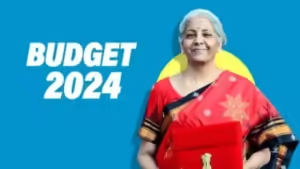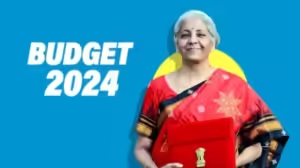GST WEEKLY UPDATE : 34/2021-22 (21.11.2021) CA Vipul Khandhar

CA Vipul Khandhar
(Author is a well known Chartered Accountant Practicing at Ahmedabad)
- Latest Notifications Issued By CBIC:
Notification No. 15/2021 –Central Tax
- i) Composite supply of works contract to Govt. Entity or Govt. Authority will be taxable @18 percent w.e.f. 01st January, 2022
- ii) Job Work by way of Dyeing and Printing of Textile and Textile Products will be taxable @12 percent w.e.f. 01st January, 2022
Notification No. 16/2021 –Central Tax
Vide Notification No.16/2021-Central Tax, removed exemption for:
- Pure services and composite supply of goods and services where goods constitute not more than 25 percent value, provided to a Govt. Entity or Govt. Authority.
In Serial No. 3 (i.e., pure services) and 3A (i.e., Composite supply of goods and services in which the value of supply of goods constitutes not more than 25% of the value of the said composite supply), the words “or a Governmental authority or a Government Entity” have been omitted in order to exclude such services supplied to a Governmental Authority or Government Entity. Thus, services mentioned in Serial No. 3 and 3A provided to Governmental authority and Government Entity shall no longer be exempt from January 1, 2022 and shall attract GST as applicable under Services Rate Notification.
- Non-AC contract Carriage or State Carriage or metered Cabs or Auto/e-rickshaws if supplied through e-commerce operators.
Notification No. 17/2021 –Central Tax
Tax shall be paid by e-commerce operator for supply of restaurant service other than the services supplied by restaurant. In simple words, online food delivery apps are now liable to pay GST.
- Major changes in GST from 1st Jan, 2022:
Restaurant owners [other than those located in Hotel having room tariff more than 7500 per day per room] need not pay GST on food supplied by them through e-commerce operators like Swiggy, Zomato. The same shall be paid by e-commerce operators. There such sale will not become part of GST Returns also.
- Clarification on certain GST refund related issues:
Various representations have been received from taxpayers and other stakeholders seeking clarification in respect of certain issues relating to refund. The issues have been examined. In order to ensure uniformity in the implementation of the provisions of the law across field formations, the Board, in exercise of its powers conferred by section 168(1) of the Central Goods and Services Tax Act, 2017 (“CGST Act”), hereby clarifies each of these issues as under:
| S. No. | Issue | Clarification |
| 1. | Whether the provisions of subsection (1) of section 54 of the CGST Act regarding time period, within which an application for refund can be filed, would be applicable in cases of refund of excess balance in electronic cash ledger? | No, the provisions of sub-section (1) of section 54 of the CGST Act regarding time period, within which an application for refund can be filed, would not be applicable in cases of refund of excess balance in electronic cash ledger. |
| 2. | Whether certification/ declaration under Rule 89(2)(l) or 89(2)(m) of CGST Rules, 2017 is required to be furnished along with the application for refund of excess balance in electronic cash ledger? | No, furnishing of certification/ declaration under Rule 89(2)(l) or 89(2)(m) of the CGST Rules, 2017 for not passing the incidence of tax to any other person is not required in cases of refund of excess balance in electronic cash ledger as unjust enrichment clause is not applicable in such cases. |
| 3. | Whether refund of TDS/TCS deposited in electronic cash ledger under the provisions of section 51 /52 of the CGST Act can be refunded as excess balance in cash ledger? | The amount deducted/collected as TDS/TCS by TDS/ TCS deductors under the provisions of section 51 /52 of the CGST Act, as the case may be, and credited to electronic cash ledger of the registered person, is equivalent to cash deposited in electronic cash ledger. It is not mandatory for the registered person to utilise the TDS/TCS amount credited to his electronic cash ledger only for the purpose for discharging tax liability. The registered person is at full liberty to discharge his tax liability in respect of the supplies made by him during a tax period, either through debit in electronic credit ledger or through debit in electronic cash ledger, as per his choice and availability of balance in the said ledgers.
Any amount, which remains unutilized in electronic cash ledger, after discharge of tax dues and other dues payable under CGST Act and rules made thereunder, can be refunded to the registered person as excess balance in electronic cash ledger in accordance with the proviso to sub-section (1) of section 54, read with sub-section (6) of section 49 of CGST Act |
| 4. | Whether relevant date for the refund of tax paid on supplies regarded as deemed export by recipient is to be determined as per clause (b) of Explanation (2) under section 54 of CGST Act and if so, whether the date of return filed by the supplier or date of return filed by the recipient will be relevant for the purpose of determining relevant date for such refunds? | Clause (b) of Explanation (2) under Section 54 of CGST Act reads as under:
“(b) in the case of supply of goods regarded as deemed exports where a refund of tax paid is available in respect of the goods, the date on which the return relating to such deemed exports is furnished;” On perusal of the above, it is clear that clause (b) of Explanation (2) under section 54 of the CGST Act is applicable for determining relevant date in respect of refund of amount of tax paid on the supply of goods regarded as deemed exports, irrespective of the fact whether the refund claim is filed by the supplier or by the recipient. Further, as the tax on the supply of goods, regarded as deemed export, would be paid by the supplier in his return, therefore, the relevant date for purpose of filing of refund claim for refund of tax paid on such supplies would be the date of filing of return, related to such supplies, by the supplier. |
- Circular No. 166/22/2021-GST dated November 17, 2021
To clarify the matter further regarding the QR code, the Entry at S. No. 4 of the Circular No. 156/12/2021-GST dated June 21, 2021 is substituted as below:
| 4. | ” In cases, where receiver of services is located outside India, and payment is being received by the supplier of services ,through RBI approved modes of payment, but as per provisions of the IGST Act 2017, the place of supply of such services is in India, then such supply of services is not considered as export of services as per the IGST Act 2017; whether in such cases, the Dynamic QR Code is required on the invoice issued, for such supply of services, to such recipient located outside India? | No. Wherever an invoice is issued to a recipient located outside India, for supply of services, for which the place of supply is in India, as per the provisions of IGST Act 2017, and the payment is received by the supplier, in convertible foreign exchange or in Indian Rupees wherever permitted by the RBI, such invoice may be issued without having a Dynamic QR Code, as such dynamic QR code cannot be used by the recipient located outside India for making payment to the supplier.” |
- Circular No. 156/12/2021-GST, dated June 21, 2021 stands modified to this extent:
Rate of GST rate changes w.e.f. 01.01.2022:
| INSERTED IN SCHEDULE 2- TAX RATE 12%, SUBSTITUTED | |||
| Sch 3 | |||
| Serial No | HSN | Description | GST rate |
| “132AA | 5007 | Woven fabrics of silk or of silk waste. | 12% |
| 132AB | 5111 | Woven fabrics of carded wool or of carded fine animal hair. | 12% |
| 132AC | 5112 | Woven fabrics of combed wool or of combed fine animal hair. | 12% |
| 132AD | 5113 | Woven fabrics of coarse animal hair or of horse hair. | 12% |
| 132AE | 5208 | Woven fabrics of cotton, containing 85% or more by weight of cotton, weighing not more than 200g/m2. | 12% |
| 132AF | 5209 | Woven fabrics of cotton, containing 85% or more by weight of cotton, weighing more than 200g/m2. | 12% |
|
132AG |
5210 |
Woven fabrics of cotton, containing less than 85% by weight of cotton, mixed mainly or solely with man-made fibres, weighing not more than 200g/m2. | 12% |
|
132AH |
5211 |
Woven fabrics of cotton, containing less than 85% by weight of cotton, mixed mainly or solely with man-made fibres, weighing more than 200g/m2. | 12% |
| 132AI | 5212 | Other woven fabrics of cotton. | 12% |
| 132AJ | 5309 | Woven fabrics of flax. | 12% |
| 132AK | 5310 | Woven fabrics of jute or of other textile bast fibres of heading 5303. | 12% |
| 132AL | 5311 | Woven fabrics of other vegetable textile fibres; woven fabrics of paper yarn.”; | 12% |
| “132BA | 5401 | Sewing thread of man-made filaments, whether or not put up for retail sale. | 12% |
| 132BB | 5402 | Synthetic filament yarn (other than sewing thread), not put up for retail sale, including synthetic monofilament of less than 67 decitex. | 12% |
| 132BC | 5403 | Artificial filament yarn (other than sewing thread), not put up for retail sale, including artificial monofilament of less than 67 decitex. | 12% |
|
132BD |
5404 |
Synthetic monofilament of 67 decitex or more and of which no cross- sectional dimension exceeds 1 mm; strip and the like (for example, artificial straw) of synthetic textile materials of an apparent width not exceeding 5 mm. | 12% |
|
132BE |
5405 |
Artificial monofilament of 67 decitex or more and of which no cross- sectional dimension exceeds 1 mm; strip and the like (for example, artificial straw) of artificial textile materials of an apparent width not exceeding 5 mm. | 12% |
| 132BF | 5406 | Man-made filament yarn (other than sewing thread), put up for retail sale. | 12% |
| 132BG | 5407 | Woven fabrics of synthetic filament yarn, including woven fabrics obtained from materials of heading 5404. | 12% |
| 132BH | 5408 | Woven fabrics of artificial filament yarn, including woven fabrics obtained from materials of heading 5405.” | 12% |
| “132CA | 5501 | Synthetic filament tow. | 12% |
| 132CB | 5502 | Artificial filament tow | 12% |
| 132CC | 5503 | Synthetic staple fibres, not carded, combed or otherwise processed for spinning. | 12% |
| 132CD | 5504 | Artificial staple fibres, not carded, combed or otherwise processed for spinning. | 12% |
| 132CE | 5505 | Waste (including noils, yarn waste and garnetted stock) of man-made fibres. | 12% |
| 132CF | 5506 | Synthetic staple fibres, carded, combed or otherwise processed for spinning. | 12% |
| 132CG | 5507 | Artificial staple fibres, carded, combed or otherwise processed for spinning. | 12% |
| 132CH | 5508 | Sewing thread of man-made staple fibres, whether or not put up for retail sale. | 12% |
| 132CI | 5509 | Yarn (other than sewing thread) of synthetic staple fibres, not put up for retail sale. | 12% |
| 132CJ | 5510 | Yarn (other than sewing thread) of artificial staple fibres, not put up for retail sale. | 12% |
| 132CK | 5511 | Yarn (other than sewing thread) of man-made staple fibres, put up for retail sale. | 12% |
| 132CL | 5512 | Woven fabrics of synthetic staple fibres, containing 85% or more by weight of synthetic staple fibres. | 12% |
|
132CM |
5513 |
Woven fabrics of synthetic staple fibres, containing less than 85% by weight of such fibres, mixed mainly or solely with cotton, of a weight not exceeding 170 g/m2. | 12% |
|
132CN |
5514 |
Woven fabrics of synthetic staple fibres, containing less than 85% by weight of such fibres, mixed mainly or solely with cotton, of a weight exceeding 170 g/m2. | 12% |
| 132CO | 5515 | Other woven fabrics of synthetic staple fibres. | 12% |
| 132CP | 5516 | Woven fabrics of artificial staple fibres.”; | 12% |
|
139 |
5607 |
“Twine, cordage, ropes and cables, whether or not plaited or braided and whether or not mpregnated, coated or sheathed with rubber or plastics | 12% |
| “139A | 5608 | Knotted netting of twine, cordage or rope; made up of fishing nets and other made up nets, of textile materials.”; | 12% |
| “146A | 5801 | Woven pile fabrics and chenille fabrics, other than fabrics of heading 5802 or 5806.” | 12% |
|
“151A |
5806 |
Narrow woven fabrics, other than goods of heading 5807; narrow fabrics consisting of warp without weft assembled by means of an adhesive (bolducs).” |
12% |
|
154 |
5808 |
“Braids in the piece; ornamental trimmings in the piece, without embroidery, other than knitted or crocheted; tassels, pompons and similar Articles | 12% |
|
155 |
5809 |
“Woven fabrics of metal thread and woven fabrics of metallised yarn of heading 5605, of a kind used in apparel, as furnishing fabrics or for similar purposes, not elsewhere specified or included | 12% |
| 156 | 5810 | “Embroidery in the piece, in strips or in motifs | 12% |
| 168 | 5911 | Chapter 59 | 12% |
| “168A | 6001 | Pile fabrics, including “long pile” fabrics and terry fabrics, knitted or crocheted. | 12% |
|
168B |
6002 |
Knitted or crocheted fabrics of a width not exceeding 30 cm, containing by weight 5% or more of elastomeric yarn or rubber thread, other than those of heading 6001. | 12% |
| 168C | 6003 | Knitted or crocheted fabrics of a width not exceeding 30 cm, other than those of heading 6001 or 6002. | 12% |
|
168D |
6004 |
Knitted or crocheted fabrics of a width exceeding 30 cm, containing by weight 5% or more of elastomeric yarn or rubber thread, other than those of heading 6001. | 12% |
| 168E | 6005 | Warp knit fabrics (including those made on galloon knitting machines), other than those of headings 6001 to 6004. | 12% |
| 168F | 6006 | Other knitted or crocheted fabrics.”; | 12% |
| 169 | 61 | “Articles of apparel and clothing accessories, knitted or crocheted, of sale value exceeding ₹ 1000 per piece” | 12% |
| 169 | 61 | “Articles of apparel and clothing accessories, knitted or crocheted. | 12% |
| 170 | 62 | “Articles of apparel and clothing accessories, not knitted or crocheted, of sale value exceeding ₹ 1000 per piece” | 12% |
| 170 | 62 | “Articles of apparel and clothing accessories, not knitted or crocheted.” | 12% |
| “171A1 | 6301 | Blankets and travelling rugs. | 12% |
| 171A2 | 6302 | Bed linen, table linen, toilet linen and kitchen linen. | 12% |
| 171A3 | 6303 | Curtains (including drapes) and interior blinds; curtain or bed valances. | 12% |
| 171A4 | 6304 | Other furnishing articles, excluding those of heading 9404. | 12% |
| 171A5 | 6305 | Sacks and bags, of a kind used for the packing of goods. | 12% |
| 171A6 | 6306 | Tarpaulins, awnings and sunblinds; tents; sails for boats, sailboards or landcraft; camping goods. | 12% |
| 171A7 | 6307 | Other made up articles, including dress patterns. | 12% |
|
171A8 |
6308 |
Sets, consisting of woven fabric and yarn, whether or not with accessories, for making up into rugs, tapestries, embroidered table cloths or serviettes, or similar textile articles, put up in packings for retail sale. | 12% |
|
171A9 |
6309 |
Worn clothing and other worn articles. |
12% |
| 171A10 | 6310 | Used or new rags, scrap, twine, cordage, rope and cables and worn out articles of twine, cordage, rope or cables, of textile materials. | 12% |
| 171A11 | 64 | Footwear of sale value not exceeding ₹ 1000 per pair.” | 12% |
Disclaimer:
This publication contains information for general guidance only. It is not intended to address the circumstances of any particular individual or entity. Although the best of endeavour has been made to provide the provisions in a simpler and accurate form, there is no substitute to detailed research with regard to the specific situation of a particular individual or entity. We do not accept any responsibility for loss incurred by any person for acting or refraining to act as a result of any matter in this publication.






